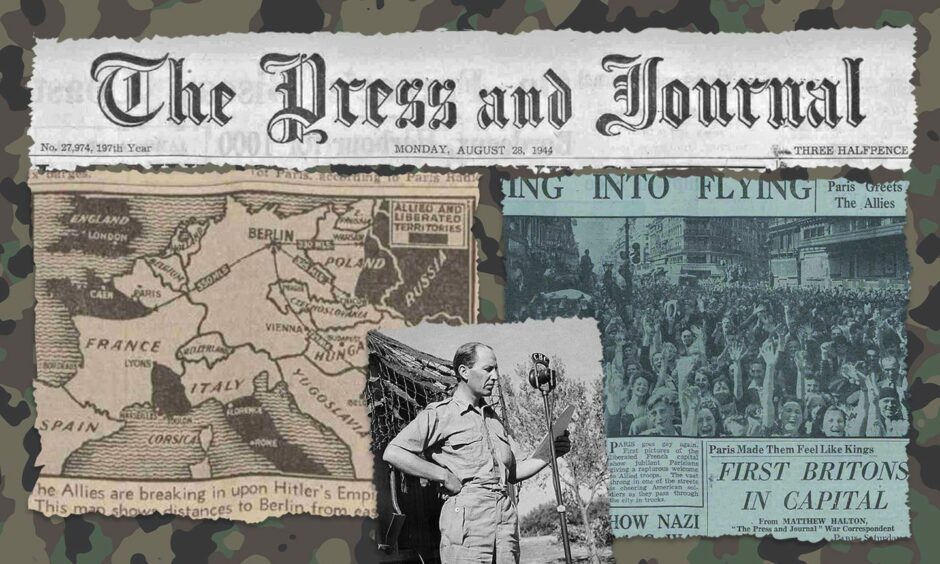
The P&J was only a four page edition that momentous day, Monday August 28, 1944, but it was an edition like no other even now, in the paper’s 275th anniversary year.
Hitler’s Third Reich, which had held the world to ransom for the past five gruelling and blood-soaked years was falling apart.
One of the regime’s greatest prizes, Paris, had been liberated by the Allies after four years of Nazi occupation, and the P&J’s war correspondent, Matthew Halton was one of the first half dozen men in British uniform to enter the city.
His report is vivid, full of joy, but also fear.
“I soon knew what it was like to feel like a king,” Halton reported. “We came up from the south along the Avenue d’Italie.
“For hours we had strained our eyes for the first sight of Paris and then suddenly there it was, the most beautiful city in the world, and the people surging into the streets in hundreds of thousands.
“I don’t know how we got through those streets. We were among the first vehicles and the people just went mad.
“We drove for miles saluting and shouting Vive La France till we lost our voices.
“Every time we stopped for a second, women pressed round the jeep to kiss us and to shower us with flowers.”
But liberation isn’t a straightforward process.
Before long the convoy was in danger.
“But as we drove along the Boulevard St Germain toward the river and the bridge leading to the Place de La Concorde the crowds thinned out because there was fighting just ahead.
“Germans were holding the Senate and the Chamber of Deputies. There was machine gun fire, rifle fire from German snipers and an occasional shot from a tank.
“I saw Germans come out with white flags to surrender to French soldiers lying behind their barricades. Bullets hit the walls above us, but no one seemed to care.”
Halton wanted to skirt the fighting and get across the Seine to get to the heart of Paris, so he was put in touch with the Maquis, France’s resistance fighters.
“Two young men of the Maquis and a girl, an actress came to get me. They broke into tears when they saw I was British and the kissed me twenty times.
“Then they took me in their car, and we drove through the wildly cheering crowds with our arms around each other.
“We crossed the river to the Île de la Cité, the cradle of French history, and then hand in hand with history we drove to Notre Dame then to the Hotel de Ville and finally up the Avenue of the Opera to my old hotel The Scribe.
“Men, women and children kissed us and thanked us for coming.
“Walls were knocked down to produce stores of champagne hidden from the Germans.”
Halton only had one regret about the day.
Where were the British troops?
“The only sad thing, it seemed to me was that the British and Canadian troops who have done so much and suffered so much were not taking part with their American and French comrades in the entry into Paris.
“The British above all should have taken part in this glory, the most glorious thing I have ever experienced.”
Amid pages packed with accounts of bloody events across the world in different theatres of war, there was still room for a little home news in that heady little edition of the P&J that day.
Death of Skye war hero
Elsewhere in that day’s P&J, the sad death of a valiant young Skye man reported missing in action was confirmed.

Flt Lt William F M Porteous, already the recipient of the equivalent of two Distinguished Flying Medals, and a Distinguished Service Medal was the son of Mr and Mrs J S Porteous of the Portree, previous owners of the Orbost Hotel in Skye, and at one time residents of Waverley Road, Nairn.
There’s not much information about the brave flight lieutenant, except that he was educated at Aberdeen Grammar School and Portree, and joined the RAF Volunteer Reserve in 1940.
By 1943 he had earned his honours, with the DSO coming in May.
But the war would cut this promising young life off when he was only 23.
Tradition broken to keep food on the table
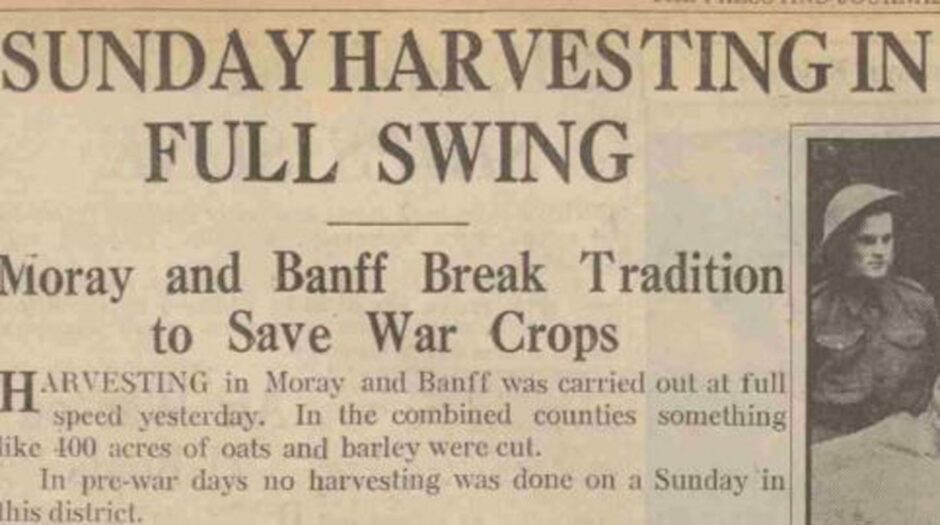
In Banff and Moray, a tradition had been broken.
Harvesting had taken place on a Sunday to try and save every grain for a country on slim rations.
Everyone turned out to help, including evacuees from London.
A Morayshire farmer told the P&J: “These Londoners are a bit awkward but they are exceptionally willing.
“Hitler has driven them from their homes with flying bombs, but they getting in behind him nicely on the harvest field.”
Home Guard on exercise
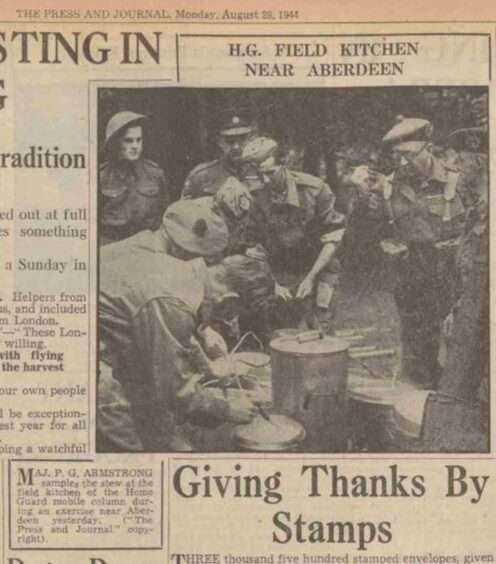
Meanwhile, the Home Guard mobile column was on exercise near Aberdeen.
In a scene we’d now think of as like a clip from Dad’s Army, the highlight of the exercise seems to have been the stew in the field kitchen.

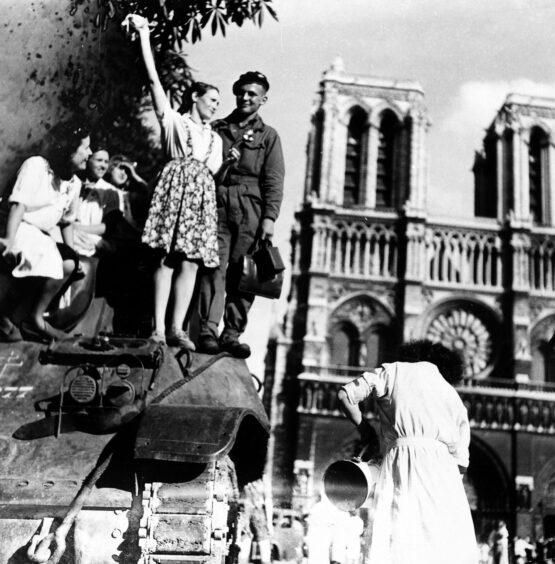

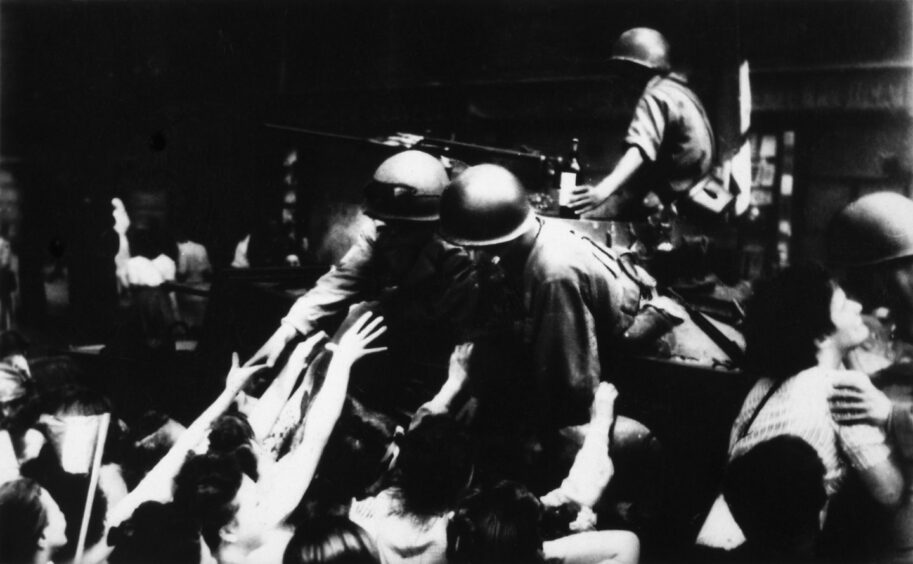


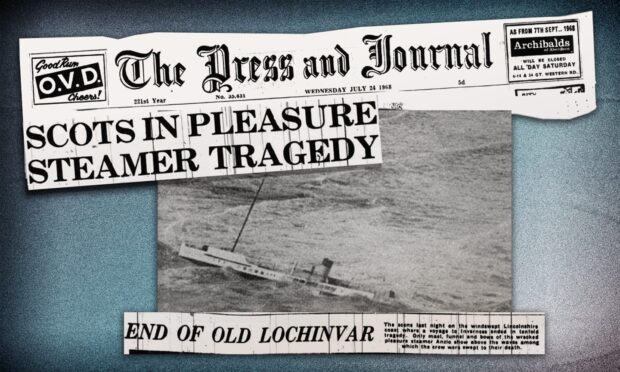
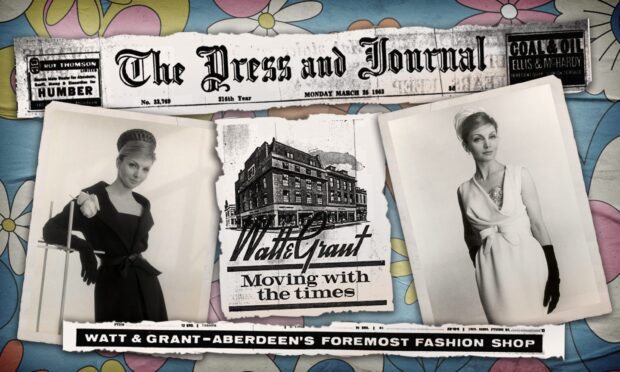
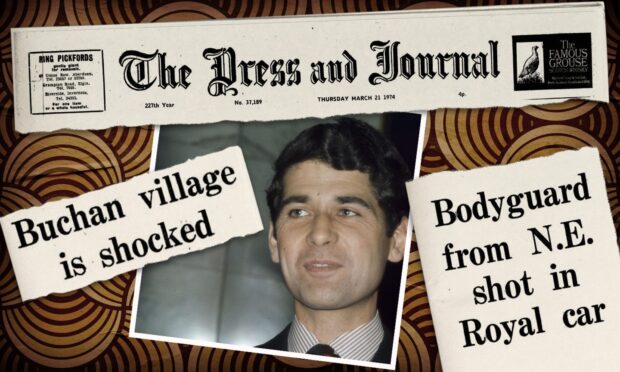
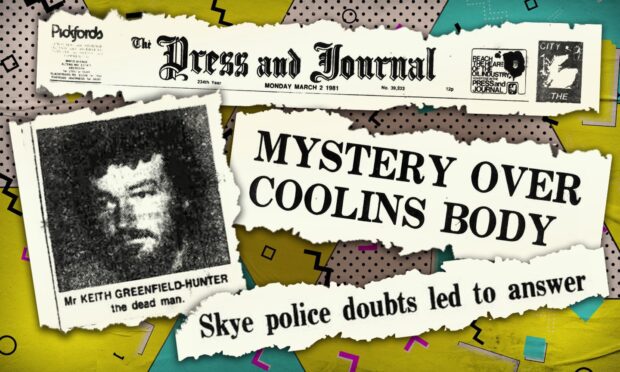
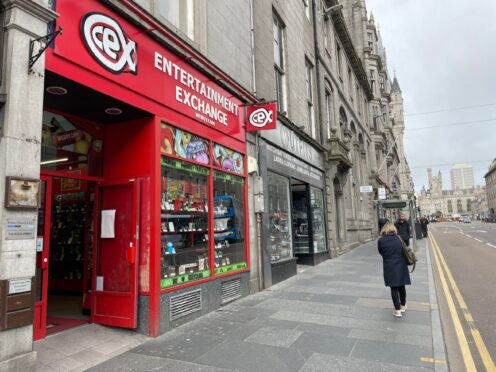
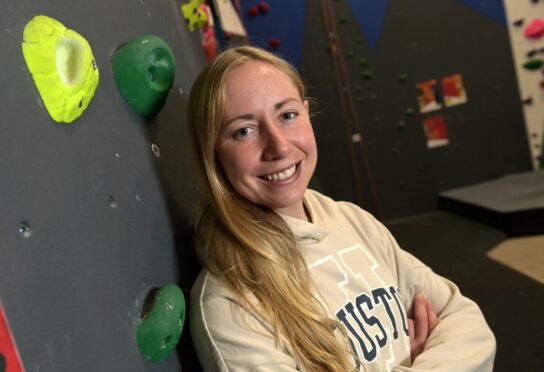
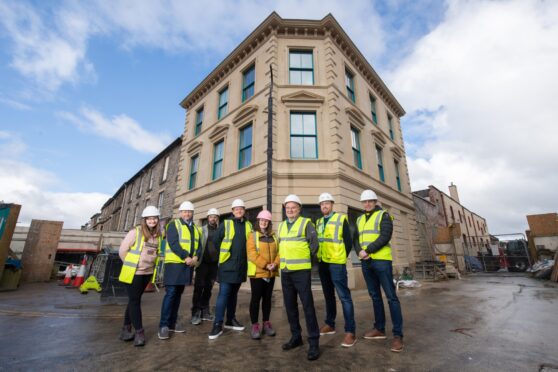

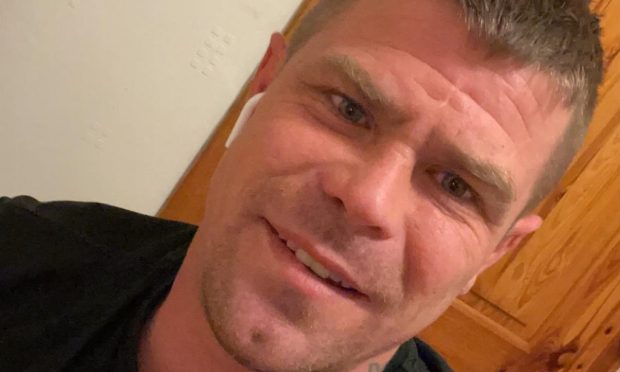


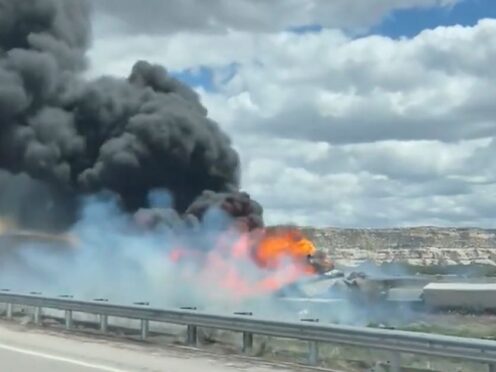
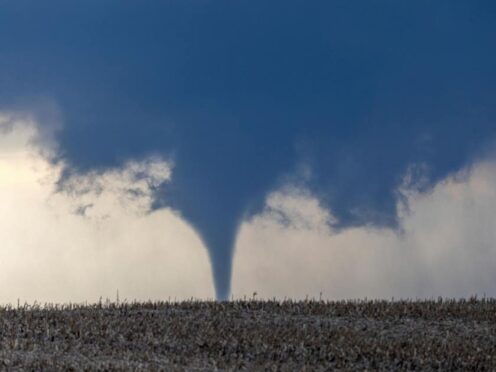
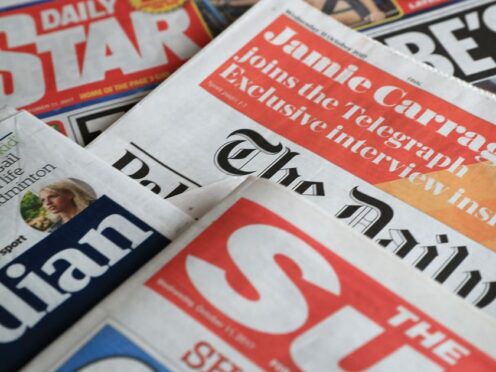
Conversation